NCERT Summary : Theme-3 Kinship, Caste and Class (Class 12) | History for UPSC CSE PDF Download
Introduction
By examining various textual sources, including the epic Mahabharata, Dharmasutras, and Buddhist texts, historians piece together a complex picture of how kinship, caste, and class influenced social norms and behaviors. These elements not only determined social hierarchy but also affected daily interactions, marriage practices, and the transmission of wealth and power.
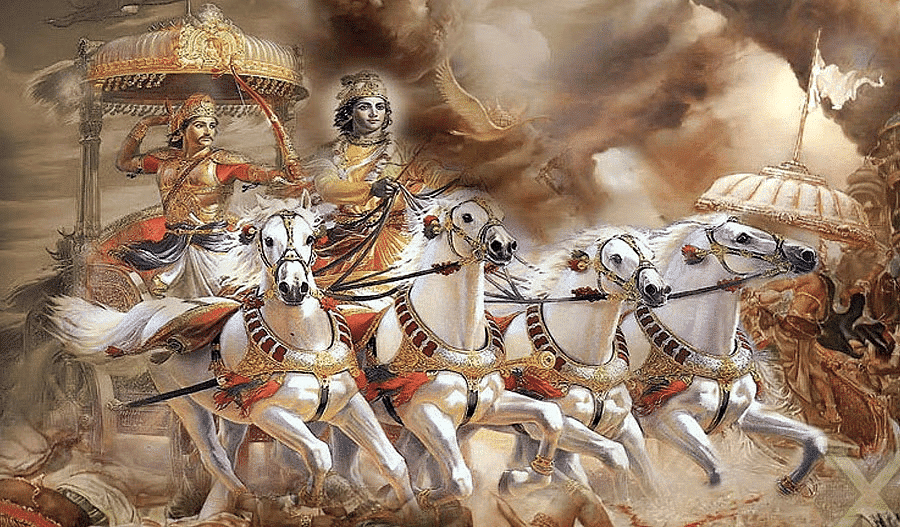
The Critical Edition of the Mahabharata
The Mahabharata's Composition
- The Mahabharata, one of the richest texts of the subcontinent, was composed over approximately 1,000 years, starting around 500 BCE.
- The central story revolves around two sets of warring cousins, the Kauravas and the Pandavas, and includes norms of behavior for various social groups.
- It reflects the complex processes that shaped early and later social histories through dialogues between dominant traditions and local ideas.
- The Mahabharata was initially composed by charioteer-bards who accompanied Kshatriya warriors to the battlefield and composed poems celebrating their victories and other achievements.
- From the fifth century BCE, Brahmanas took over the story and began to commit it to writing, reflecting the transition from chiefdoms to kingdoms.
The Critical Edition Project
- The project to create a critical edition of the Mahabharata was initiated in 1919 under the leadership of V.S. Sukthankar.
- It involved collecting Sanskrit manuscripts of the text from different regions, written in various scripts, to compare verses and document regional variations.
- The project took 47 years to complete, resulting in a critical edition that spans over 13,000 pages.
- The critical edition revealed both common elements and significant regional variations, reflecting the dynamic transmission of the text across the subcontinent.
- The variations documented in footnotes and appendices highlight the complex interplay between dominant traditions and local practices.
Kinship and Marriage: Many Rules and Varied Practices
Finding about the Families- Kinship structures in early societies varied greatly across regions and communities, influencing social norms and daily interactions.
- Families often shared resources, lived together, and performed rituals collectively, but the definitions of kinship and family relationships differed.
- In some societies, cousins were considered blood relations, while in others, they were not.
- Historians investigate attitudes towards family and kinship to gain insights into people's thinking and actions, recognizing that these ideas likely shaped social behaviors.
- Information about elite families is easier to retrieve, while reconstructing the familial relationships of ordinary people is more challenging.
The Ideal of Patriliny
Patriliny means tracing descent from father to son, grandson and so on.
- Patriliny was a significant aspect of social organization in early Indian society.
- The Mahabharata, a pivotal text, reinforced the value of patrilineal succession through its central story of the Kauravas and Pandavas.
- Most ruling dynasties claimed patrilineal descent, though practices varied, with instances of brothers succeeding each other or other kinsmen claiming the throne.
- Occasionally, women like Prabhavati Gupta exercised power, highlighting exceptions to the patrilineal norm.
- Patriliny was evident in ritual texts like the Rigveda, where mantras emphasized the importance of sons and their role in continuing the family lineage.
Rules of Marriage
- Marriage practices were regulated to maintain social order and ensure alliances between families.
- Exogamy (marrying outside one's kin group) was common, especially among high-status families, to forge alliances and avoid close kin marriages.
- Young girls and women from high-status families often had their lives closely controlled to ensure they married at the “right” time and to the “right” person. This led to the belief that kanyadana (the gift of a daughter in marriage) was a crucial religious duty for the father.
- Various forms of marriage, including arranged marriages, voluntary unions, and capture-based marriages, were recognized, reflecting diverse practices.
- The Manusmriti, a key legal text, outlined eight forms of marriage, categorized into "good" and "condemned" types, reflecting evolving social norms.
- These forms included the gift of a daughter to a learned man, voluntary union of lovers, and marriages involving wealth exchange, highlighting different societal values.
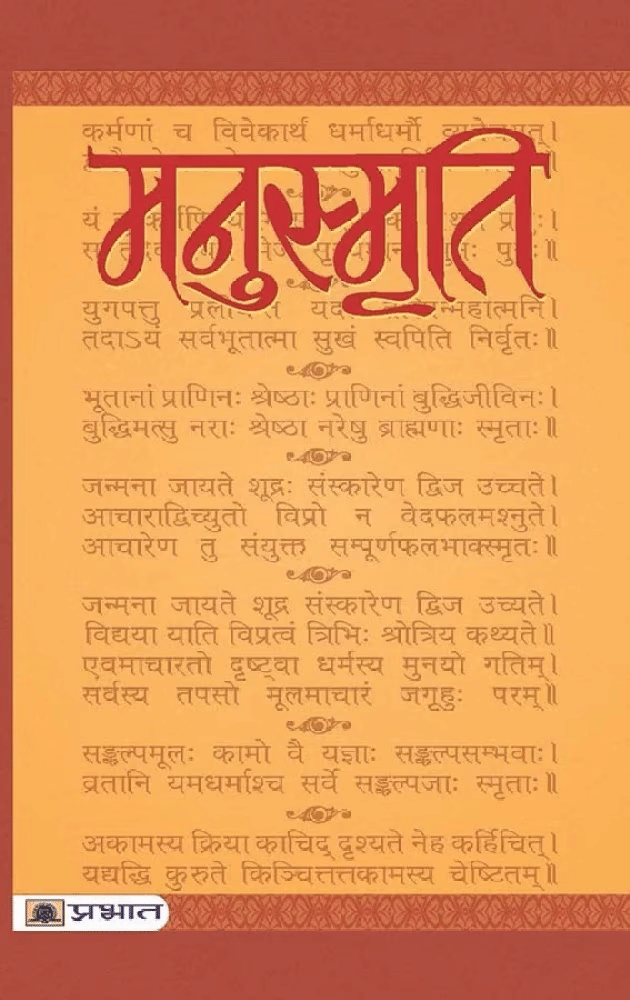
The Gotra of Women
- The Brahmanical practice of classifying people in terms of gotras, named after Vedic seers, was evident from around 1000 BCE.
- Women were expected to adopt their husband's gotra upon marriage, reflecting patrilineal norms.
- Evidence from the Satavahana dynasty indicates variations, with some women retaining their father's gotra, reflecting endogamy (marriage within the kin group).
- This practice of endogamy ensured close-knit communities and highlighted regional diversity in kinship practices.
- Some of the Satavahana rulers practiced polygyny, meaning they had more than one wife.
- The examination of names derived from gotras in inscriptions allows historians to trace family ties and marriages, revealing variations in adherence to Brahmanical norms.
Were Mothers Important?
- Satavahana rulers were identified through metronymics (names derived from the mother), suggesting the importance of mothers in naming conventions.
- However, succession to the throne was generally patrilineal, indicating a complex interplay between matrilineal and patrilineal influences.
- The use of metronymics highlights the significance of mothers in early Indian society, despite the dominance of patrilineal succession.
- Historical records show that some women retained their father's gotra, challenging Brahmanical norms and reflecting alternative practices.
- The examination of metronymics and succession practices provides insights into the roles and status of women in early Indian society.
Social Differences: Within and Beyond the Framework of Caste
The "Right" Occupation
- The Dharmasutras and Dharmashastras prescribed ideal occupations for the four varnas: Brahmanas, Kshatriyas, Vaishyas, and Shudras.
- Brahmanas were to study and teach the Vedas, perform sacrifices, and give and receive gifts, emphasizing their role in religious and educational activities.
- Kshatriyas were to engage in warfare, protect people, and administer justice, reflecting their role as rulers and warriors.
- Vaishyas were to engage in agriculture, pastoralism, and trade, highlighting their role in economic activities.
- Shudras were assigned the occupation of servitude, serving the three higher varnas, reflecting their lower status in the social hierarchy.
- Brahmanas used various strategies to enforce these norms, asserting divine origin, advising kings, and persuading people that status was determined by birth.
Non-Kshatriya Kings
- Although Brahmanical texts claimed that only Kshatriyas could be kings, historical evidence shows that many rulers, including the Mauryas and Shakas, did not fit this ideal.
- The Mauryas, who ruled a large empire, were debated to be of non-Kshatriya origin, with Buddhist texts suggesting they were Kshatriyas, while Brahmanical texts described them as of "low" origin.
- The Shungas and Kanvas, successors of the Mauryas, were Brahmanas, challenging the notion that only Kshatriyas could be rulers.
- Political power often depended on one's ability to muster support and resources, rather than strict adherence to the varna system.
- The case of Rudradaman, a Shaka ruler who rebuilt the Sudarshana lake, shows that powerful mlechchhas (outsiders) were familiar with Sanskritic traditions and held significant power.
Jatis and Social Mobility
- Beyond the four varnas, numerous jatis (sub-castes) emerged, often based on occupation, allowing for social mobility within specific professions.
- Jatis were sometimes organized into guilds (shrenis), reflecting a structured and collaborative approach to economic activities.
- The Mandasor inscription (c. fifth century CE) provides insights into the organization and social roles of a guild of silk weavers who migrated and settled in a new region.
- The inscription highlights the complexities of social processes, with guild members sharing more than a common profession and collectively investing in communal projects like constructing a temple.
- Brahmanical authorities classified new groups into jatis when encountering people who did not fit into the fourfold varna system, illustrating the fluidity and adaptability of social categories.
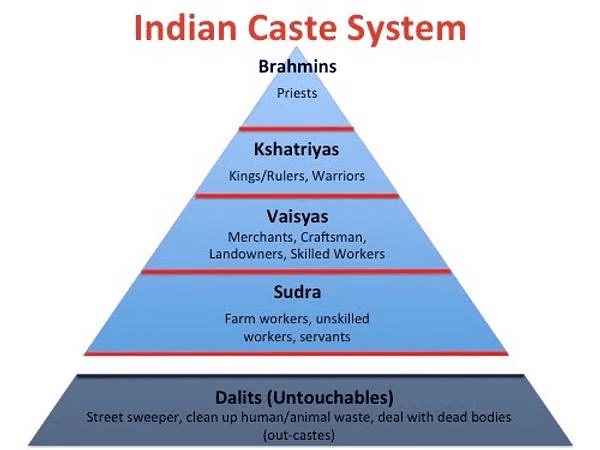
Beyond the Four Varnas: Integration
- Populations whose social practices were not influenced by Brahmanical ideas, such as forest-dwellers and nomadic pastoralists, were often described as odd or uncivilized.
- These groups were viewed with suspicion and labeled as mlechchhas (outsiders) by Brahmanical texts, reflecting a hierarchical and exclusionary social perspective.
- Despite this, there was a sharing of ideas and beliefs between settled communities and these marginalized groups, as evidenced by stories in the Mahabharata.
- For instance, the story of Ekalavya, a Nishada (hunting community) youth, highlights the tension between Brahmanical norms and the skills and practices of marginalized communities.
- Historians study these interactions to understand the complex processes of integration and the dynamic nature of early Indian society.
Beyond the four varnas: Subordination and conflict
- The Brahmanical social order also included categories such as chandalas (untouchables) who were assigned degrading tasks and faced severe discrimination.
- The Manusmriti laid down the duties and restrictions for chandalas, such as living outside the village, using discarded utensils, and wearing clothes of the dead.
- Chandalas were expected to dispose of bodies and serve as executioners, reflecting their marginalization and subordination.
- Historical texts like the Chinese pilgrim Fa Xian's accounts provide additional insights into the lives of untouchables and their social exclusion.
- Examining non-Brahmanical texts and inscriptions reveals that social realities were often more complex, with some individuals and groups challenging their prescribed roles.
Beyond Birth: Resources and Status
Gendered Access to Property
- Gender significantly influenced access to resources, with men inheriting and controlling wealth while women's access was limited.
- The Manusmriti allowed women to retain gifts received at marriage (stridhana or a woman's wealth), but broader property rights were restricted.
- Wealthy women like the Vakataka queen Prabhavati Gupta had some access to resources, but overall, land, cattle, and money were generally controlled by men.
- Social differences between men and women were sharpened due to the disparities in access to resources, reinforcing gender inequalities.
- The story of Draupadi in the Mahabharata, where she was staked and lost in a game of dice, illustrates the limited agency and property rights of women.
Varna and Access to Property
- According to Brahmanical texts, another criterion for regulating access to wealth was varna, with different occupations and privileges assigned to each varna.
- Brahmanas and Kshatriyas were typically depicted as wealthy, with priests and kings enjoying significant economic resources.
- Other traditions, such as Buddhism, critiqued the rigid varna order and emphasized ethical conduct and merit over birth-based status.
- The Buddhist text Majjhima Nikaya highlights the idea that wealth, not birth, determined social relationships, challenging Brahmanical views.
- This critique of the varna system reflects the dynamic and contested nature of social hierarchies in early Indian society.
An Alternative Social Scenario: Sharing Wealth
- In certain regions like ancient Tamilakam, social status was also linked to generosity and the sharing of wealth.
- Chiefs were expected to share their wealth with bards and poets, reflecting a cultural value that esteemed generosity over mere accumulation.
- Poems from the Tamil Sangam literature illuminate social and economic relationships, suggesting that those who controlled resources were expected to share them.
- The story of a poor but generous chief from the Puranaruru, a Tamil Sangam anthology, highlights the importance of generosity in social interactions.
- This alternative social scenario emphasizes the role of generosity and communal sharing in maintaining social cohesion and status.
Explaining Social Differences: A Social Contract
- Buddhist texts offered alternative views on social inequality and the institutions required to regulate social conflict.
- A myth from the Sutta Pitaka suggests that originally human beings lived in an idyllic state, taking only what they needed from nature.
- As greed, vindictiveness, and deceit increased, human beings selected a leader to maintain order, known as the mahasammata (the great elect).
- This myth implies that kingship and social order were based on human choice and mutual agreement, with taxes as payment for services rendered by the king.
- The recognition of human agency in creating social systems suggests that these systems could be changed, offering a critique of the static and divine nature of the Brahmanical social order.
Handling Texts: Historians and the Mahabharata
Language and Content
- The Mahabharata is written in simpler Sanskrit, suggesting it was widely understood compared to the more complex language of the Vedas or prashastis.
- Historians classify the content into narrative (stories) and didactic (prescriptive norms) sections, recognizing that these divisions are not watertight.
- The text is described as an itihasa (history), though its literal truth is debated, with some historians suggesting it preserves the memory of an actual conflict among kinfolk.
- The narrative sections include dramatic and moving stories, while the didactic sections likely added later, provide social messages and norms.
- The interplay between narrative and didactic elements highlights the evolving nature of the text and its reflections of social realities.

Author(s) and Dates
- The original story was likely composed by charioteer-bards known as sutas, who celebrated the victories and achievements of Kshatriya warriors.
- From the fifth century BCE, Brahmanas began to commit the story to writing, reflecting the transition from chiefdoms to kingdoms.
- The Mahabharata evolved over centuries, with significant additions during periods when the worship of Vishnu gained prominence, and Krishna became identified with Vishnu.
- The text is traditionally attributed to the sage Vyasa, who is said to have compiled the final version, which grew from fewer than 10,000 verses to about 100,000 verses.
- The composition and compilation of the Mahabharata reflect the dynamic and contested nature of social and religious changes in early Indian society.
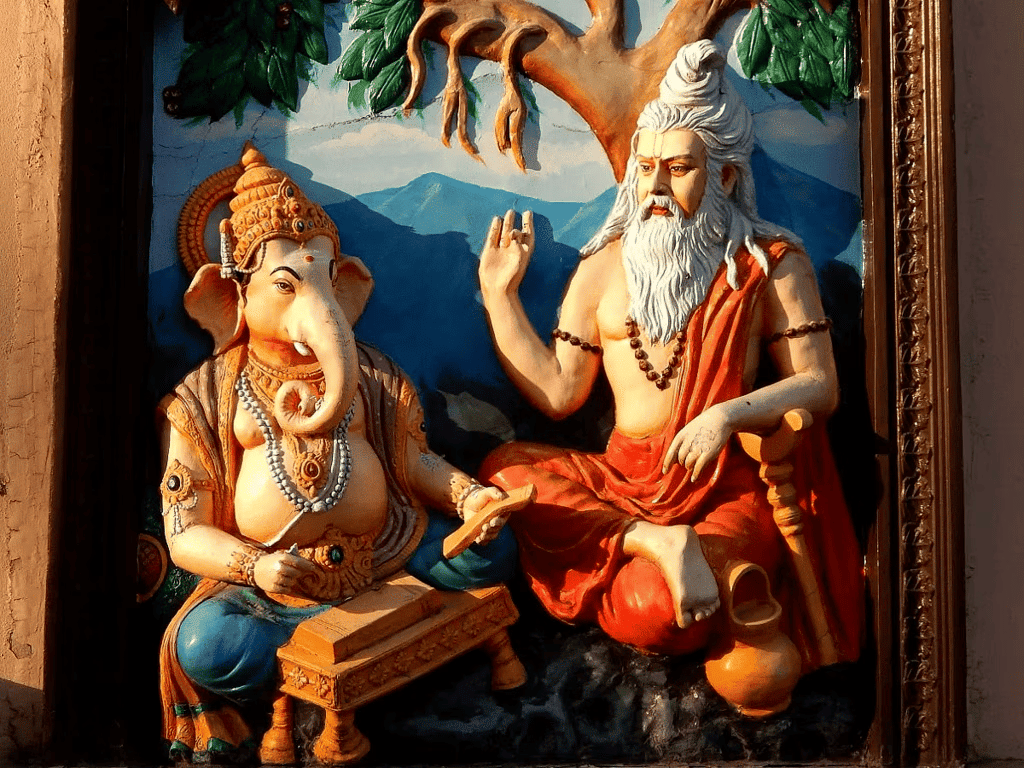
The Search for Convergence
- Archaeological excavations, like those at Hastinapura by B.B. Lal in 1951-52, provide some evidence supporting the epic's descriptions.
- Lal's findings, such as mud and burnt-brick houses and soakage jars, suggest a settlement that might correspond to the epic's Hastinapura.
- The descriptions of the city in the Mahabharata, such as grand palaces and urban infrastructure, might reflect later additions when urban centers flourished.
- The complex nature of the text and its creative narrative pose challenges in correlating it directly with archaeological evidence.
- Historians use these findings to explore the possible historical context of the Mahabharata, while acknowledging the blend of history and poetic imagination in the text.
Draupadi's Marriage:
- One of the most challenging episodes in the Mahabharata is Draupadi's marriage to the Pandavas, an instance of polyandry that is central to the narrative.
- The text offers multiple explanations for this practice, such as Draupadi's prayers to Shiva, and the seer Vyasa's interpretations, reflecting the contested nature of polyandry.
- The practice of polyandry may have been prevalent among ruling elites during times of crisis or shortage of women, but it gradually fell into disfavor among Brahmanas.
- The episode's multiple explanations highlight the text's creative narrative requirements and its engagement with different social practices.
- Historians suggest that while polyandry was unusual, its inclusion in the epic indicates the diversity and fluidity of marriage practices in early Indian society.
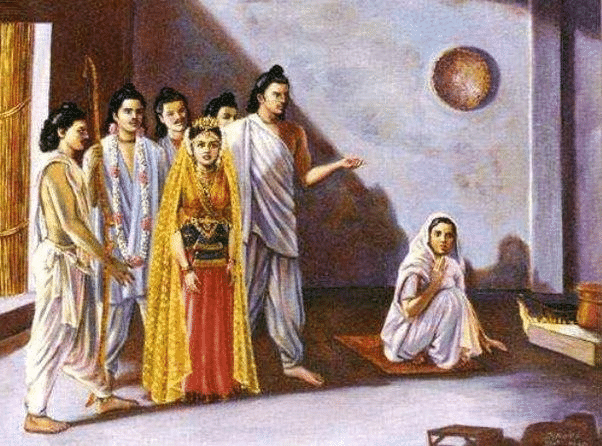
A Dynamic Text
- The growth of the Mahabharata did not stop with the Sanskrit version.
- Over the centuries, versions of the epic were written in a variety of languages.
- This growth was part of an ongoing process of dialogue between peoples, communities, and those who wrote the texts.
- Several stories that originated in specific regions or circulated among certain people found their way into the epic.
- The central story of the epic was often retold in different ways.
- Episodes from the Mahabharata were depicted in sculpture and painting.
- The epic provided themes for a wide range of performing arts – including plays, dance, and other kinds of narrations.
Timeline
Major Textual Traditions
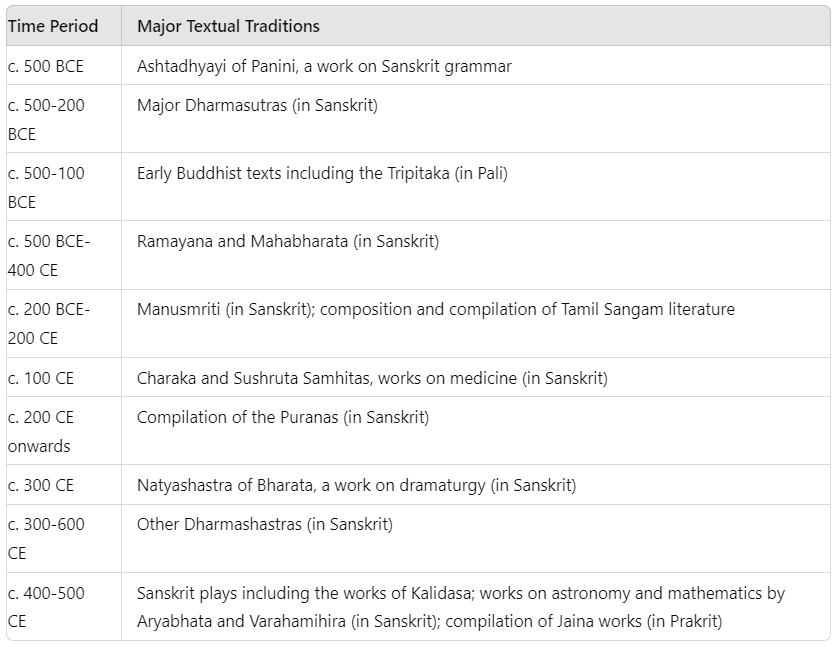
Major Landmarks in the Study of the Mahabharata

Conclusion
The Mahabharata serves as a valuable resource, illustrating the complexities and evolving nature of kinship, caste, and class in ancient India. Understanding these historical frameworks helps us appreciate the nuances and adaptability of social systems, which continue to influence contemporary discussions on social equity and justice.
|
112 videos|505 docs|173 tests
|
FAQs on NCERT Summary : Theme-3 Kinship, Caste and Class (Class 12) - History for UPSC CSE
| 1. What are the key themes explored in the Critical Edition of the Mahabharata related to kinship and marriage? |  |
| 2. How does the Mahabharata address social differences beyond the framework of caste? |  |
| 3. In what ways can the concept of a social contract be applied to explain social differences as presented in the Mahabharata? |  |
| 4. What methods do historians use to analyze the Mahabharata as a dynamic text? |  |
| 5. What is the significance of the timeline provided in the Critical Edition of the Mahabharata? |  |

|
Explore Courses for UPSC exam
|

|
















